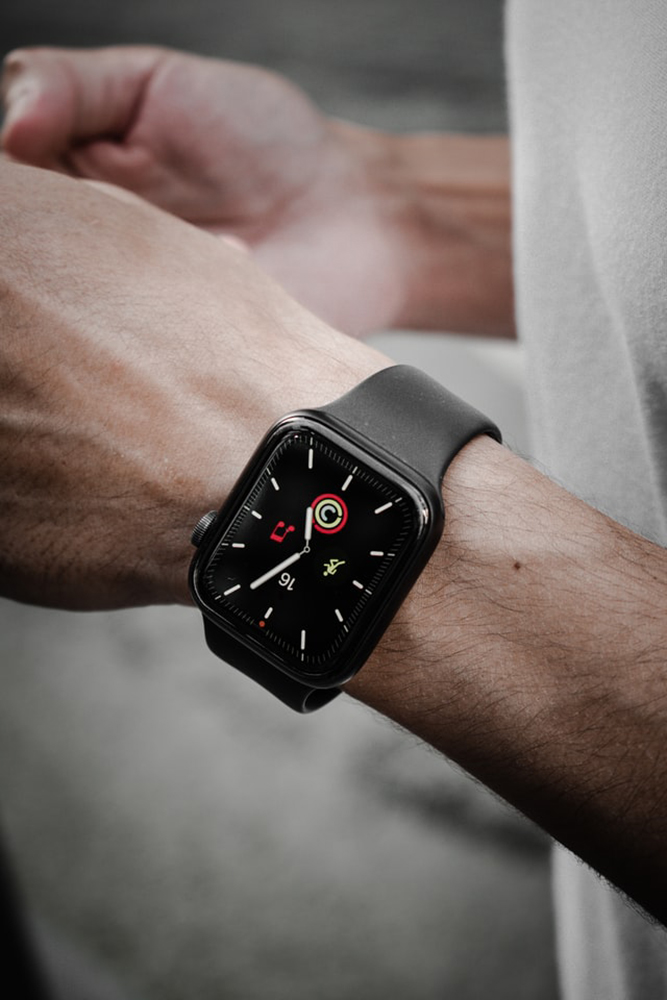


Have you ever been fixated on the metrics of your workout instead of intuitively listening to your body? We have all been there, but by continuing to obsess over how many miles you have logged or how many calories you have burned, it is easy to lose sight of why we even workout. You forget that it feels good, helps you think clearer, reduces stress and anxiety, and helps you sleep better. When we are too distracted by the numbers, we are no longer working out based on what feels right for our body at that moment. By not checking in with your body, you can easily injure yourself as well. Pushing yourself to the limit is not always the answer. This practice can turn harmful when our dependence on time, pace, or distance can replace our ability to listen to our bodies. In this article, we explore how to reframe your perspective on working out while providing tangible tips.
1.Create a Mantra and a Positive Self-Talk Practice:
I know, I know, mantras can be downright cheesy, but hear me out, they work. When you start to practice positive self-talk a multitude of things in your life can change. Researchers are continuing to explore the effects of positive thinking and optimism when it regards health. Some common mantras to repeat to yourself while working out are “I am” statements or phrases like, “I trust my path, I embrace my progress”, or “I trust my body will let me know when it is time to push and when it is time to rest.” See below for some health benefits of positive self-talk, provided by the Mayo Clinic.
Health Benefits of Positive Talk:
●Increase life span
●Lower rates of depression
●Lower levels of distress
●Greater resistance to the common cold
●Better psychological and physical well-being
●Increased cardiovascular health and reduced risk of death from cardiovascular disease
●Better coping skills during hardships
2. Reframe Your Workout Goal:
If you are someone who dreads your workouts, try reframing your perspective. Instead of working out for a set amount of time, move your goal to combat stress and anxiety. Once you feel you have accomplished that goal, move on. It is much easier to focus on something that positively affects yourself instead of focusing on a time limit.
3. Changing “I Have To” to “I Get To”:
Instead of feeling or saying, “ I have to work out”, try saying, “I get to work out”. Once you see working out as self-care, or a time to connect with your body it might be easier to enjoy. Look at it as a break from working, being at home, or having any responsibilities. Try listening to your favorite song, podcast, or audiobook that you never have time for. Working out is something that should be enjoyed instead of dreaded. Also, listen to your body and honor it when you need to take a day off.
4. Bring a Towel, Ignore the Screen:
Bring a towel to cover up your screen if you catch yourself obsessing over the metrics of your workout. Instead of fixating on how much time, calories, or distance you have logged, start getting in tune with how your body moves. Notice how you breathe and how you feel. Finish your workout when you feel ready, regardless of what the screen or your fitness watch says.
5. Integrate Low-Intensity Movement into Your Routine:
Have you ever noticed feeling frustrated and antsy after continuously working out at a high-intensity pace? Same here. Try supplementing in moderate to low intensity activities and see if that makes a difference. Keep in mind, high-intensity workouts are not always what’s most efficient nor good for your body after prolonged periods. If you love HIIT or cardio-based workouts, switch to pilates, barre, or yoga a few times a week. You may be surprised at how you feel.
あなたはトレーニング測定基準に固執して、あなたの身体の声を聞かなった事はありますか?皆もともと身体と向き合っていた筈が、いつからか走行記録や燃焼したカロリー数に執着し続けることで、なぜ運動しているのかを見失いがちです。 あなたはいつの間にか運動する事で気分が良くなり、より考え事もすっきりして、ストレスと不安を減らし、そしてあなたがよりよく眠るために役立っていた事を忘れてしまいます。 数字に気を取られすぎると、その瞬間に自分の身体に何が正しいかに基づいて運動することができなくなります。身体をチェックしないことで、怪我をすることもあります。自分を限界まで押し上げることが常に答えであるとは限りません。時間、ペース、または距離への依存が私たちの身体に耳を傾ける能力に取って代わる可能性がある場合、この慣行は有害になる可能性があります。この記事では、具体的なヒントを提供しながら、ワークアウトに関する視点を再構成する方法について説明します。
1.マントラと前向きなセルフトークの実践:
そうですよね、私は知っています。マントラは実に安っぽいと感じる事があります、しかし私の話を聞いてください、マントラは有効です。 ポジティブなセルフトークを実践し始めると、人生の多くのことが変わる可能性があります。研究者たちは、健康に関して前向きな思考と楽観主義の効果を探求し続けています。ワークアウト中に自分自身に繰り返す一般的なマントラには、「私は自分の道を信頼し、自分の進歩を受け入れる」、「私は身体が活動すべきタイミングと休ませるべきタイミングを知らせてくれると信じている」などのステートメントやフレーズがあります。メイヨークリニックが提供するポジティブセルフトークの健康上の利点については、以下を参照してください。
ポジティブトークの健康上の利点:
●寿命を延ばす
●うつ病の発生率が低下
●苦痛の軽減
●一般的な風邪に対する耐性の向上
●心理的および肉体的幸福感の向上
●心血管の健康を増進し、心血管疾患による死亡リスクの軽減
●困難な状況でのより良い対処スキル
2.ワークアウトの目標を再構成:
あなたがトレーニングを恐れる人であるならば、あなたの視点を再構成してみてください。 一定時間運動するのではなく、あなたの目標をストレスや不安と戦うものと変えてみてください。その目標を達成したと感じたら、次に進みます。 制限時間に焦点を合わせるよりも、自分にプラスの影響を与える何かに焦点を合わせる方がはるかに簡単です。
3.「I Have To」を「I Get To」に変更する:
「私は運動しなければならない」と感じたり言ったりする代わりに、「私は運動するようになる」と言ってみてください。 セルフケアの時間として運動する事で、より楽しみやすいかもしれません。仕事、家にいること、または何らかの責任を持つことからの休憩としてそれをとらえてください。時間がない時はお気に入りの曲、ポッドキャスト、オーディオブックを聴いてみてください。 エクササイズは、恐れるのではなく楽しむべきものです。 また、あなたの身体に耳を傾け、身体が休日を求めている声が聞こえたら、それを尊重してください。
4.タオルを持参し、画面を無視する:
ワークアウトをしている時に何かしらの指標に夢中になっていることに気付いた場合は、タオルを持ってその画面を覆ってください。記録した時間、カロリー、距離に固執する代わりに、身体の動きに合わせ始めましょう。呼吸の仕方と感じ方に注目してください。画面やフィットネスウォッチの内容に関係なく、準備ができたらワークアウトを終了します。
5.強度の低い動きをルーチンに取り入れる:
激しいペースで運動を続けた後、欲求不満やイライラを感じたことはありませんか? 中程度から低強度の活動で補足してみて、それが違いを生むかどうかを確認してください。高強度のトレーニングは、長期間の後にあなたの身体にとって常に最も効率的でも良いものでもないことを覚えておいてください。HIITまたは有酸素運動が好きな場合は、週に数回、ピラティス、バレエ、またはヨガに切り替えてください。あなたは自分の気持ちの変化に驚くかもしれません。